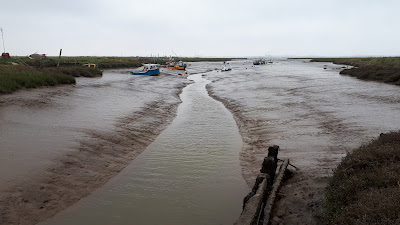A cloudy, cool day, with a strong autumnal feel. It is an hour before high tide when I get to the playing fields and gulls are assembled in their roosts. Herring Gulls on one end, 21 of them, Black-headed gulls at the other, 51. There are a few scattered Common Gulls and a single Lesser Black-backed gull too.
Tuesday 26 October 2021
Urban birding at Hull: Sculcoates week 43
Monday 25 October 2021
Urban birds at Hull. 27. Whooper Swan
Whooper Swans are migratory, the British population breeds in Iceland and flies to overwinter in the North and East of the UK. Whoopers are slightly smaller than Mute Swans and have a yellow wedge-shape mark in the bill, and a thinner neck than Mute Swans, which they carry more straight.
Status and distribution in Hull
Whoopers are most often seen during migration in Hull, usually in clear, still mornings. Records are becoming more regular with several sightings per year. Flocks fly in neat V formations, calling, as opposed to the wing-beat noise of Mute Swans. Peak migration time is the end of March and the end of October. The largest flock recorded over Hull recently comprised 42 individuals migrating North flying low over Princes Avenue on 10th March 2017.
The closest wintering populations are the Lower Derwent Valley, and in the Humber. Groups also roost at North Cave Wetlands. Occasional lone individuals remain in Hull during winter, or might spend a few days on an urban lake, usually in the company of Mute Swans, possibly having become separated from their flock. In March 1997 and in the winter of 1998 a quite approachable individual spent some time in East Park (above, a photo from a printed photo, those were the days before digital cameras!). This was my first Whooper Swan. In spring 2019, a young individual spent some time at Oak Road Lake, in the company of the resident Mute Swan family, between the 10th April and the 29th May.
Although tameness in lone Whoopers could be a result individuals being escapees from collections, wild Whooper swans are fed daily in some nature reserves in the UK in the winter (e.g. WWT Martin Mere and Caerlaverock) so even wild individuals, particularly when in the company of the tame Mute Swans, could become approachable.
Conservation
Whooper Swans are Amber listed birds in the UK, although the wintering British population is increasing. The results of the latest coordinated nationwide count of wintering migrating swans in January 2020 estimated over 43,000 individuals, a 27% increase since 2015.
More information
WWT Wild Swan monitoring. here.
Broughton, Richard K. 2002. Birds of the Hull area. Kingston Press. Hull, UK.
Thursday 21 October 2021
Urban birds at Hull. 26. Cormorant

Status and distribution in Hull
Tuesday 19 October 2021
Urban birding at Hull: Sculcoates week 42
A mild, gloomy rainy day, I take the usual route around the Sculcoates patch. A 40 strong flock of Starlings are feeding on the playing fields, and about 50 Goldfinches are moving across the birches. I spot two Pied Wagtails on the grass too.
I make a longer than usual stop at the Sculcoates bridge, as a Water Vole has been seen recently there. All year I've been hoping to connect with them, but no joy for me today. A Little Grebe was around, but it diver as it saw me, so I only got Moorhens and Mallards in the photo.
The highlight of the north Cemetery is the first Goldcrest of the autumn. Three Canada fly over. I also looked for slugs, given the ideal weather for them.
I move onto the river. Two Redshanks are feeding on the mudflats, one downstream and another upstream of Wilmington bridge. There are a dozen Black-headed Gulls and mostly immature Herring Gulls in their usual spot. A Moorhen is at the water's edge by the bridge.
Monday 18 October 2021
Migration at Stone Creek
A dark, cloudy morning, I take a stroll around Stone Creek. As I arrive, there is a large flock of Mallard on stubbles, with a few Curlew and Pheasants. The tide is ebbing and is quite low when I get to the creek. I hear Pink-footed Geese, but I only see a flock moving west later. It is a while since I've been at Stone Creek, and looking out I get the impression that the saltmarsh is growing on this section of the Humber.
Three Snipe fly south, calling. A Marsh Harrier is quartering the marsh. There is a large Golden Plover flock out in the salt marsh.
I walk West on the floodbank path. The ditch by the bank is lined by hawthorns and nervous flocks of Redwing feeding on the berries. Three Swallows fly in circles around poplar at Stone Creek House. I hear a Jay and then flush it from the hawthorns. There are a lot of Jays migrating, possibly due to a poor oak mast this year in the continent. The Marsh Harrier passes west and then over the floodbank onto the fields.
I return to the creek. A Greenshank is now feeding by the water, bobbing like a Redshank when alarmed.
Before I leave, I spot a Common Seal hauled out on a board. It seems a bit uneasy at my presence so, after a few snaps, I let it be. It looks like it had been previously rescued, as it had a yellow plastic tag on its flipper: BR028.
























































